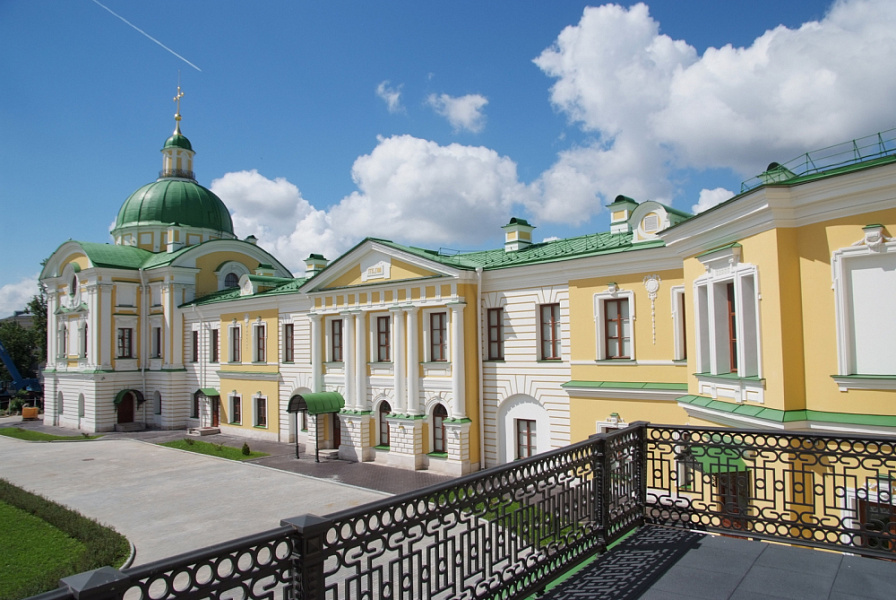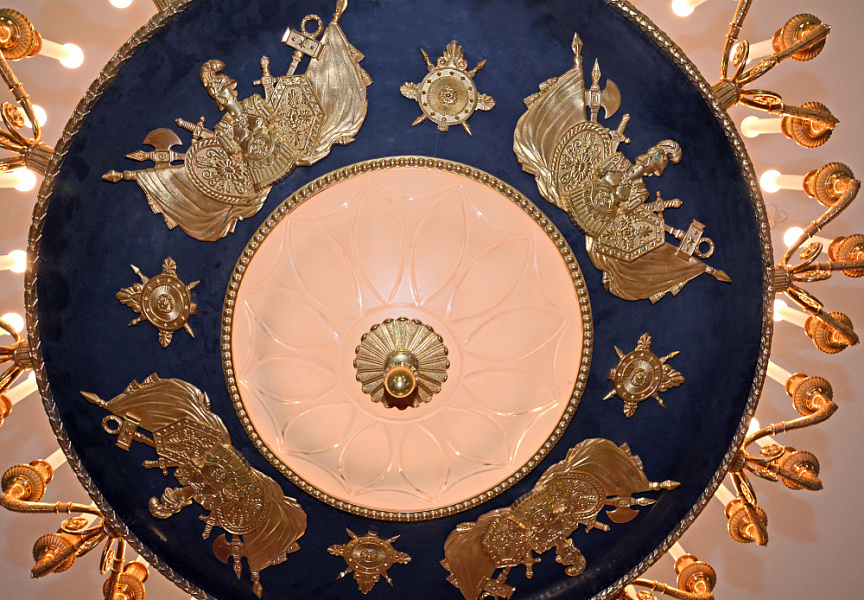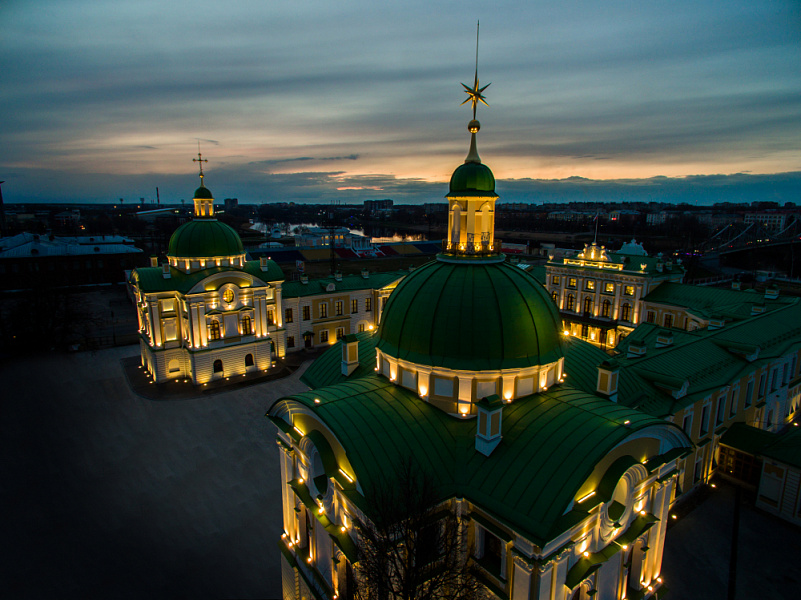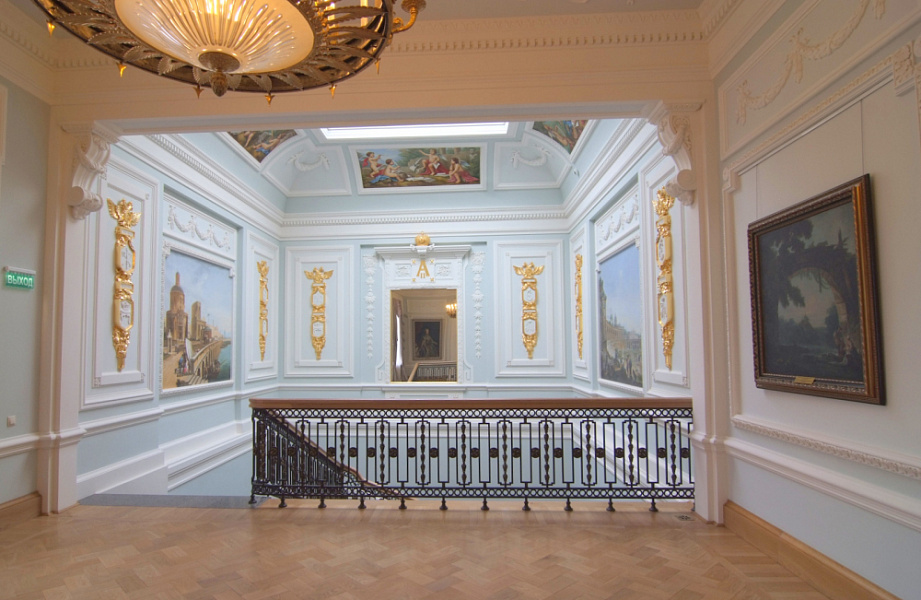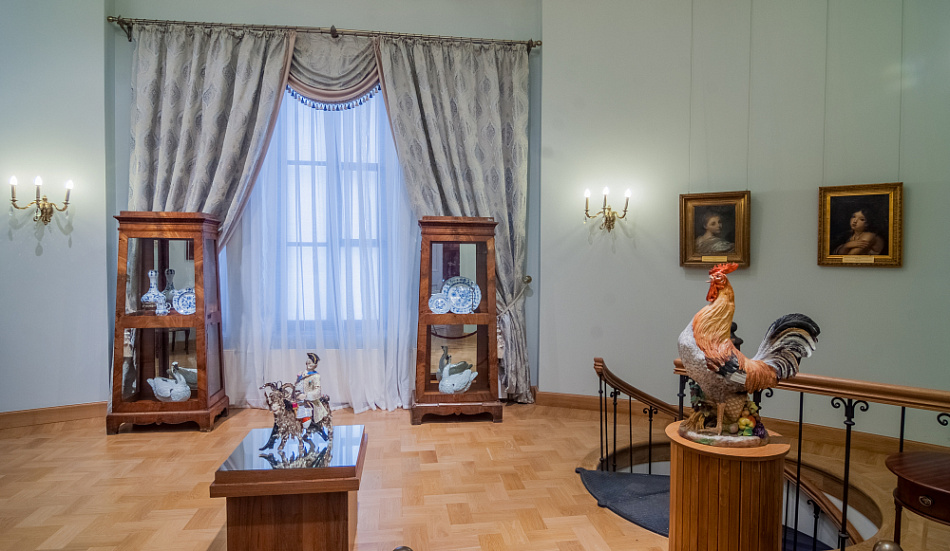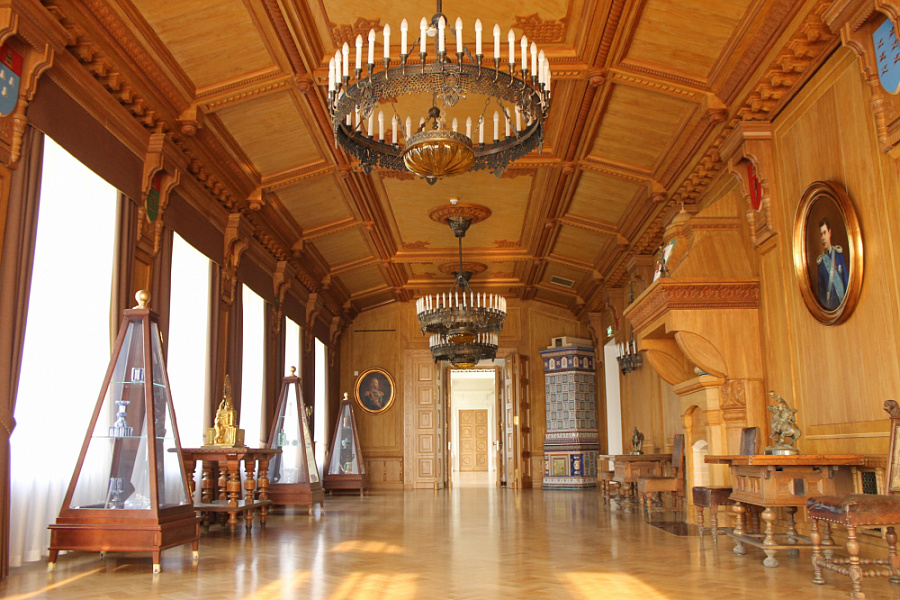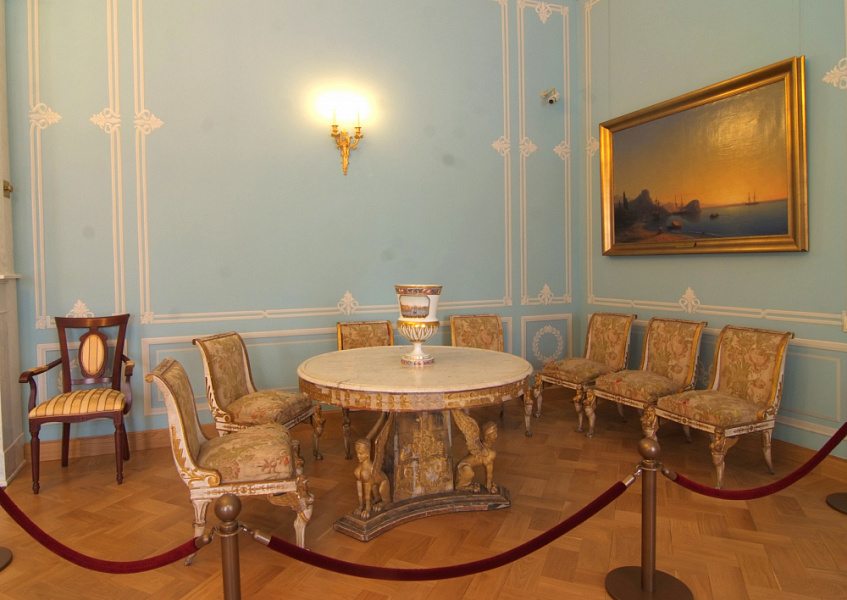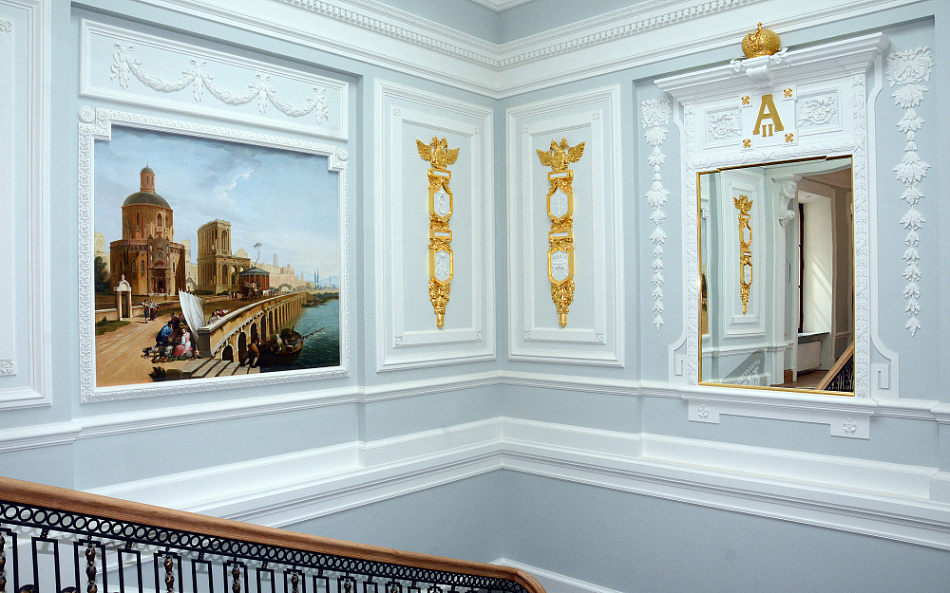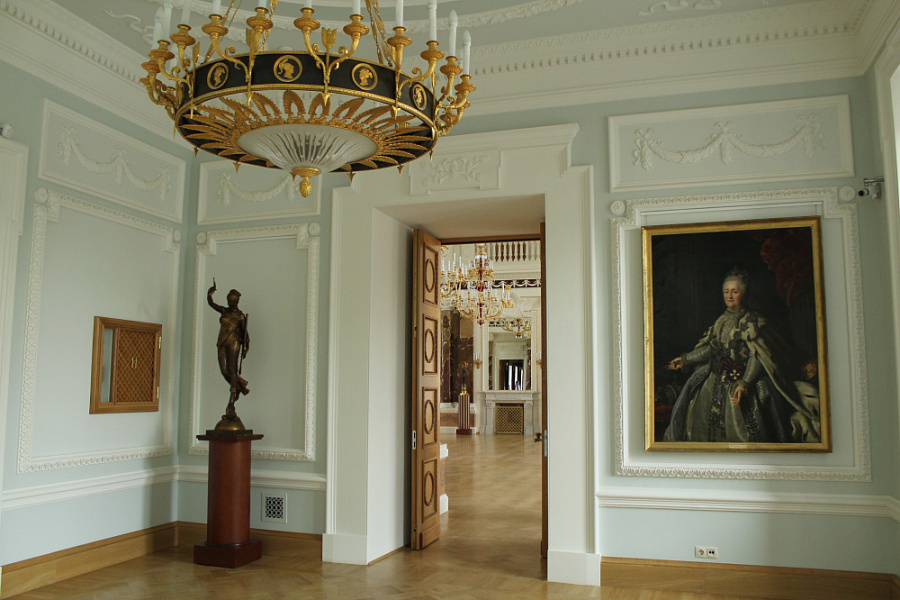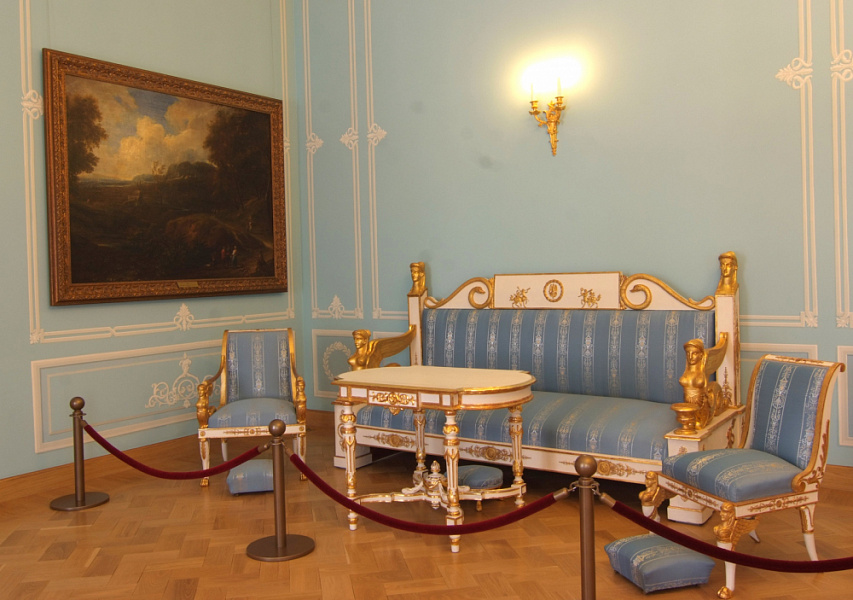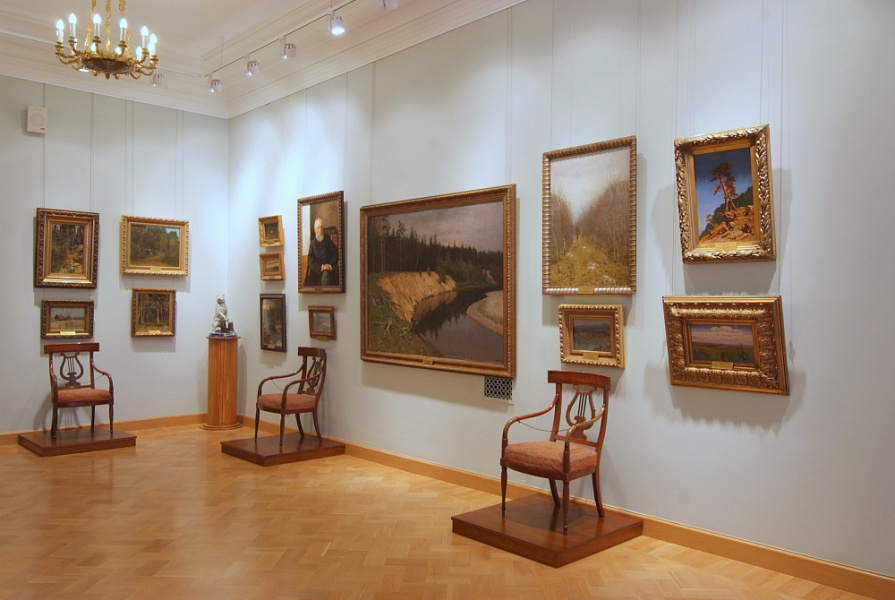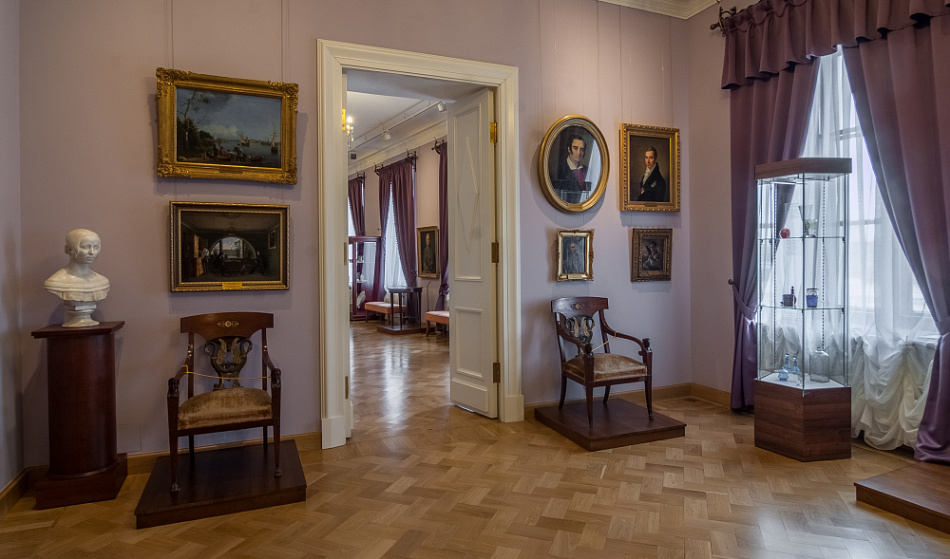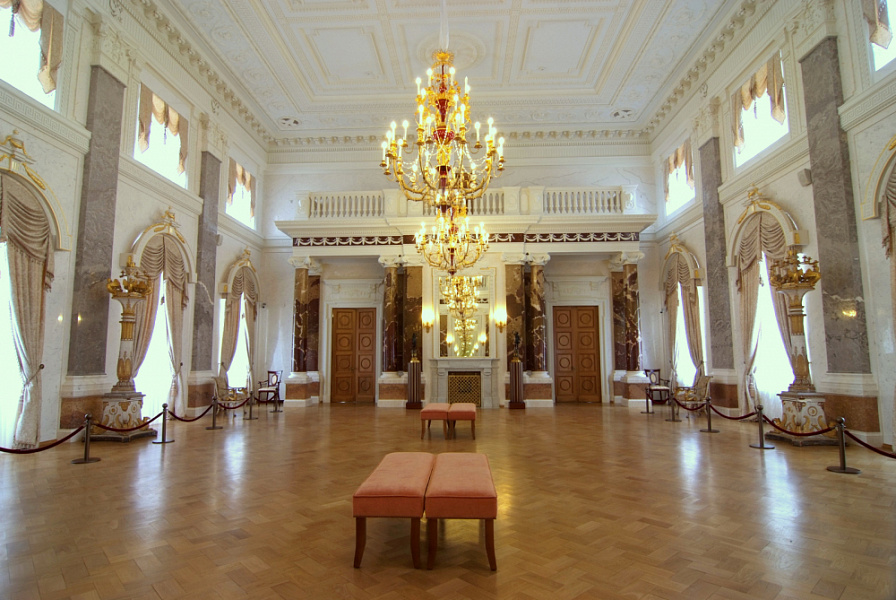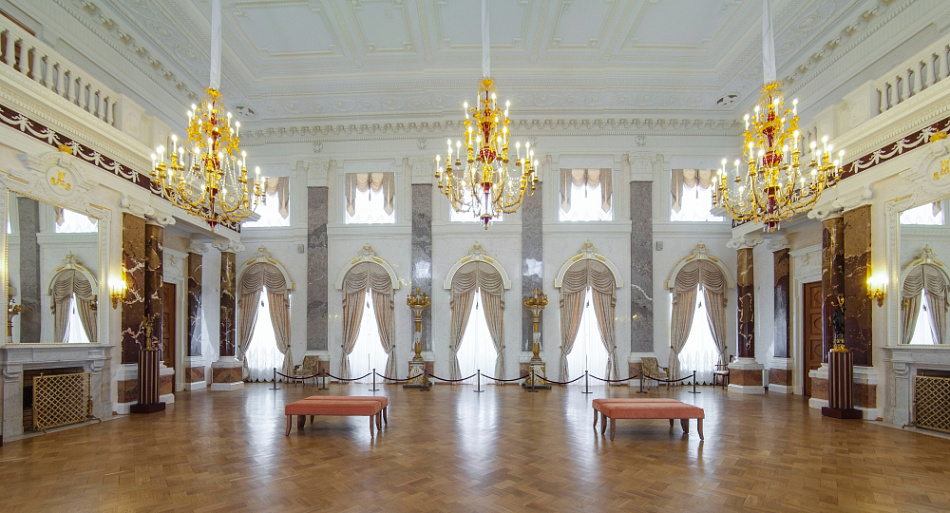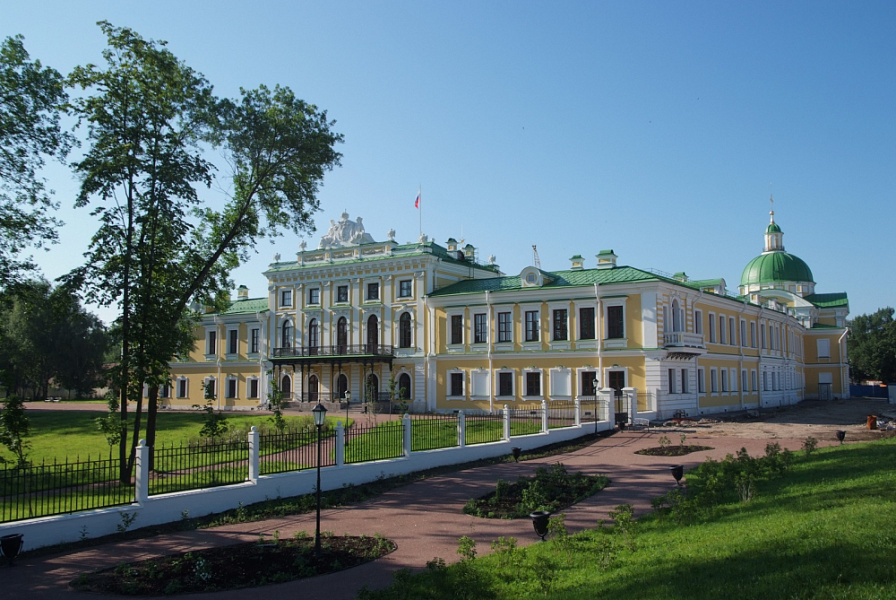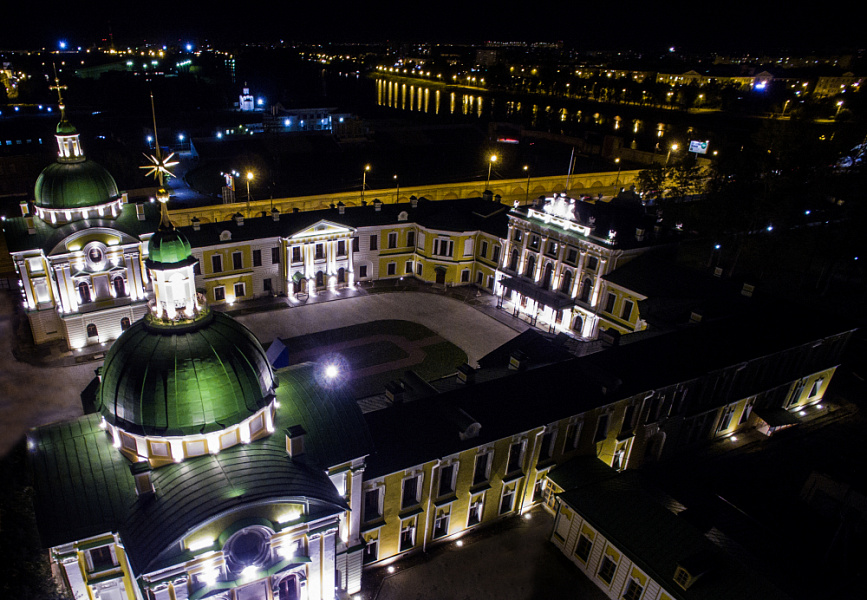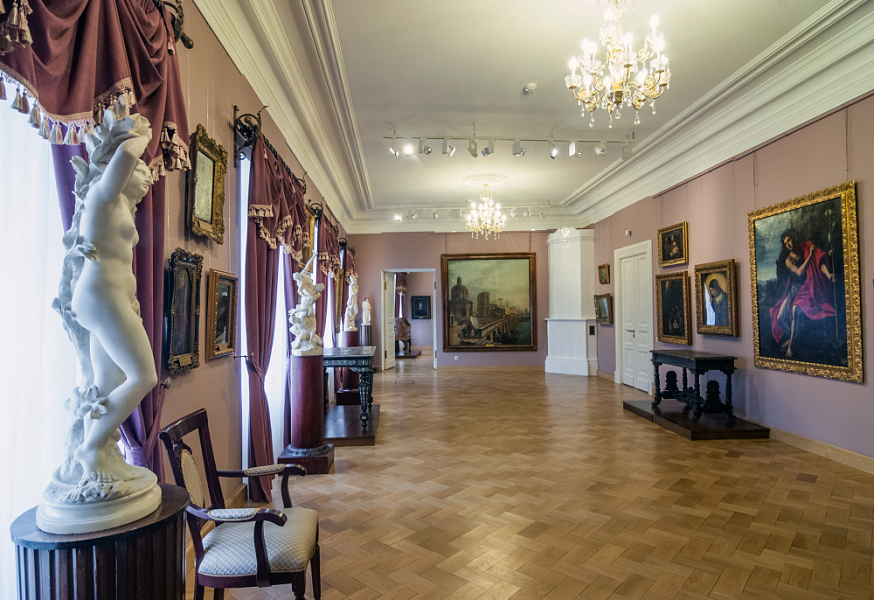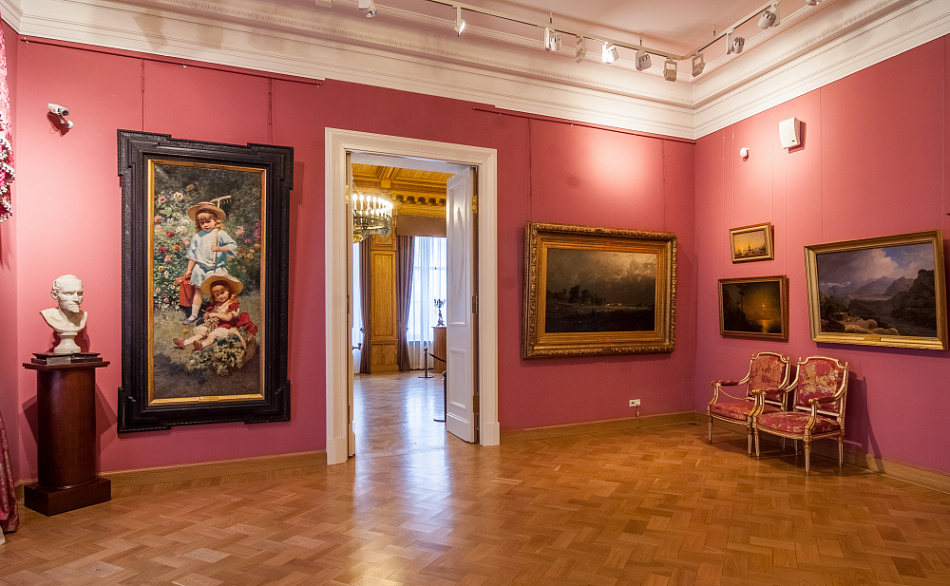Imperial Road Palace is an architectural monument of the XVIII century located in the Tver historical center on Cathedral Square between Sovetskaya street (former Millionnaya street), Old Volga Bridge and City Garden. The main Tver shrine - Transfiguration Cathedral ("Christ with roof of gold") which also served as the burial vault of the Great Tver Princes (destroyed in the 1930s) was on Cathedral Square. Nowadays the Cathedral is restored. Imperial Road Palace with two pavilions was built under project of architect P. R. Nikitin in 1764-1766 in classicism style with baroque elements. It was intended for recreation of the imperial family members on their way from St. Petersburg to Moscow (that’s why it gets this name). In 1767 the Empress Catherine II first arrived at Tver Road Palace and gave a dinner for local gentry. The Empress’ chambers were in the eastern part of the Palace. The Palace was rebuilt by C. I. Rossi at the beginning of the XIX century. At this time, a sister of Alexander I, Ekaterina Pavlovna was living there married to Tver, Novgorod and Yaroslavl Governor-General Prince George of Oldenburg. She turned the Palace into one of the country centers of social life and fashionable literary salon, where high society of Tver was meeting and which was visited by many outstanding people from Moscow and St. Petersburg. N. M. Karamzin was reading here fragments from his History of the Russian State to the Emperor Alexander I, what a commemorative plaque reminds of. Artist O. A. Kiprensky, fabulist A. E. Izmailov, poets V. A. Zhukovsky and F. N. Glinka visited the Palace. Tver Museum located in the Palace was attended by the last Russian Emperor Nicholas II shortly before his death. Nowadays there is a global reconstruction in the Imperial Road Palace, and then the exhibits of Tver Regional Art Gallery will be in its halls again. Gallery Collection includes Russian and Western European paintings, sculpture, decorative arts of the XVIII-XX centuries, works of icon painting of the XIV-XX centuries, Tver frescos of the XV century as well as materials of archaeological excavations. The exposition of the Art Gallery can be seen now at Donskoy business center nearby. The Cathedral Square will take again its original appearance after the restoration of the Transfiguration Cathedral ends.
Palace was intended for recreation of the imperial family members on their way from St. Petersburg to Moscow. In 1767 the Empress Catherine II first arrived at Tver Road Palace and gave a dinner for local gentry. The Empress’ chambers were in the eastern part of the Palace.


